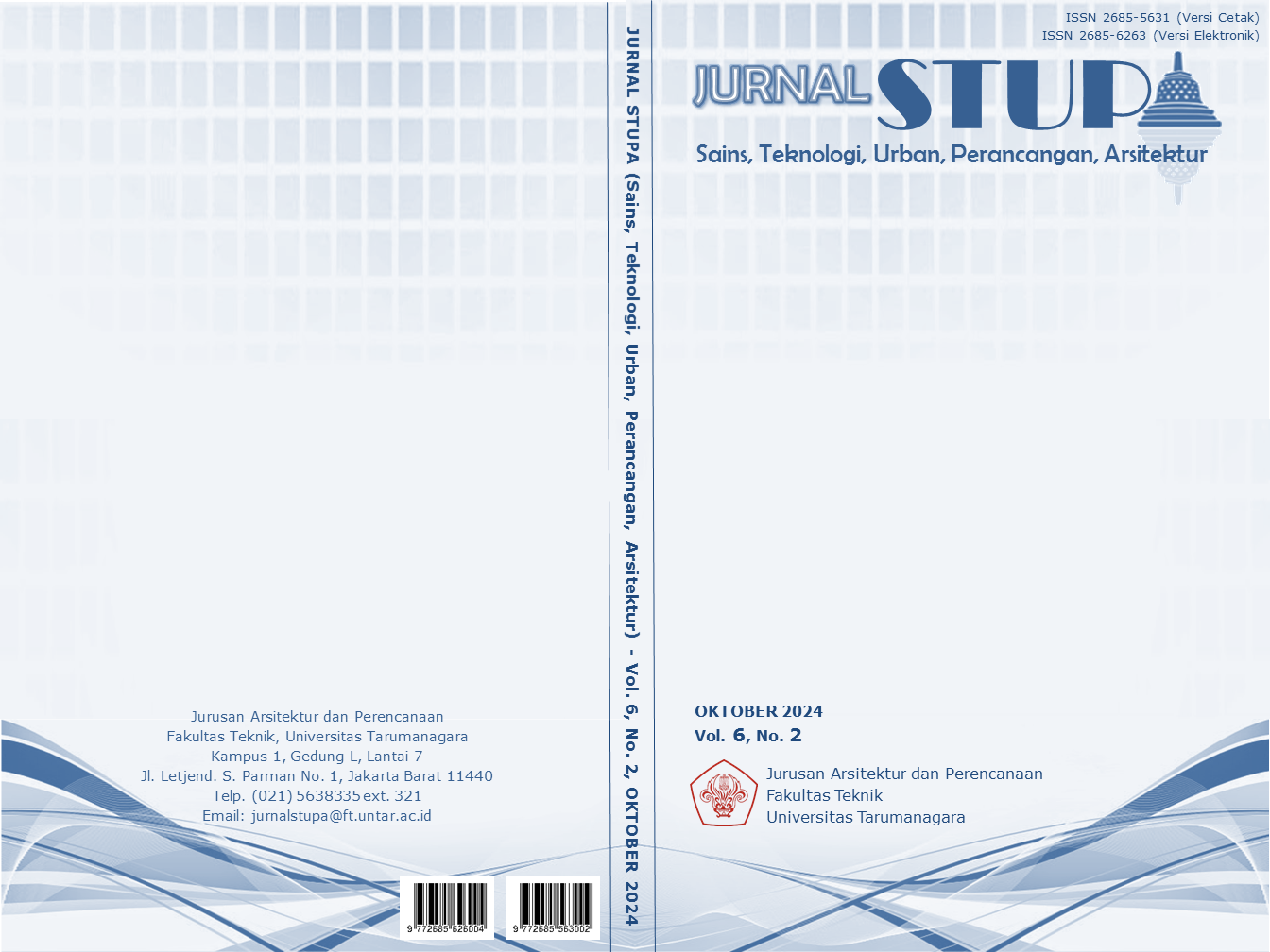PERANCANGAN FUNGSI BARU MAL BLOK M BERORIENTASI TRANSIT DENGAN PENDEKATAN FENOMENOLOGI
Main Article Content
Abstract
The purpose of this study is to propose new functions that can revive Blok M Mall in the present day. Originally, Blok M Mall was a market that emerged due to the establishment of the Blok M terminal. Over time, the transportation modes in the Blok M area have continued to develop, transforming it into a transit area rather than just a terminal. However, Blok M Mall stopped developing and can now be considered defunct and inactive. Therefore, using the phenomenological method, the author attempts to understand the phenomena occurring at Blok M Mall over time by studying the users during its peak period from various sources and understanding how they transited and engaged in activities at Blok M Mall. This will result in a scope of understanding to find suitable functions for current users who are still actively transiting, enabling them to engage in activities at Blok M Mall once again. The method also includes superimpose (referring to the discussion of the method in the main text).
Keywords: Blok M; function; phenomenology; transit
Abstrak
Tujuan dari studi ini adalah untuk bisa menemukan usulan fungsi baru yang bisa menghidupkan kembali Mal Blok M di masa kini. Awal mulanya Mal Blok M merupakan pasar yang muncul akibat lahirnya terminal Blok M. Dalam perjalanannya, moda di kawasan Blok M terus berkembang dan tidak hanya terminal saja hingga menjadi sebuah kawasan transit. Namun demikian, Mal Blok M justru berhenti berkembang hingga di saat ini bisa dikatakan mati dan tidak berjalan. Oleh karena itu, dengan metode fenomenologi, penulis mencoba memahami fenomena yang terjadi di Mal Blok M dari masa ke masa dengan memahami pengguna di masa jaya Mal Blok M dari berbagai sumber dan mengetahui bagaimana mereka melakukan transit serta turut beraktivitas di Mal Blok M, akan menghasilkan gambaran ruang lingkup untuk bisa menemukan fungsi yang cocok bagi pengguna di masa kini yang masih terus aktif melakukan transit agar bisa kembali beraktivitas di Mal Blok M lagi.
Article Details

This work is licensed under a Creative Commons Attribution-NonCommercial-ShareAlike 4.0 International License.
This work is licensed under a Jurnal Sains, Teknologi, Urban, Perancangan, Arsitektur/ STUPA Creative Commons Attribution-NonCommercial-ShareAlike 4.0 International LicenseReferences
Ayawaila, M. C. P., & Tambunan, E. (2020). ANALISIS KUALITAS PELAYANAN PADA MRT DAN BUS TRANSJAKARTA RUTE BLOK M–DUKUH ATAS. Jurnal Rekayasa Teknik Sipil dan Lingkungan-CENTECH, 1(2), 84-92.
Cervero, R. (1998). The transit metropolis: a global inquiry.
Curtis, C., Renne, J. L., & Bertolini, L. (Eds.). (2009). Transit oriented development: making it happen. Ashgate Publishing, Ltd..
Foster, C. D. (2001). The civil service under stress: the fall in civil service power and authority. Public Administration, 79(3), 725-749.
Gifarry, P., Ari, I. R. D., & Firdausiyah, N. (2022). Penerapan Kawasan Berorientasi Transit Di Kawasan Transit Blok M, Jakarta Selatan. Jurnal Tata Kota dan Daerah, 14(2), 63-74.
Golinska, P., and Romano, C. A. (2012). Environmental Issues in Supply Chain Management. Berlin, Heidelberg: Springer Berlin Heidelberg.
Jhonny, T, 2019. Blok M : Komplet Sejak Dulu, diunduh 2 July 2024, https://www.kompas.id/baca/utama/2019/02/24/blok-m-komplet-sejak-dulu
Vuchic, V. R. (2005). Urban Transit: Operations, Planning, and Economics. Hoboken: Wiley.



